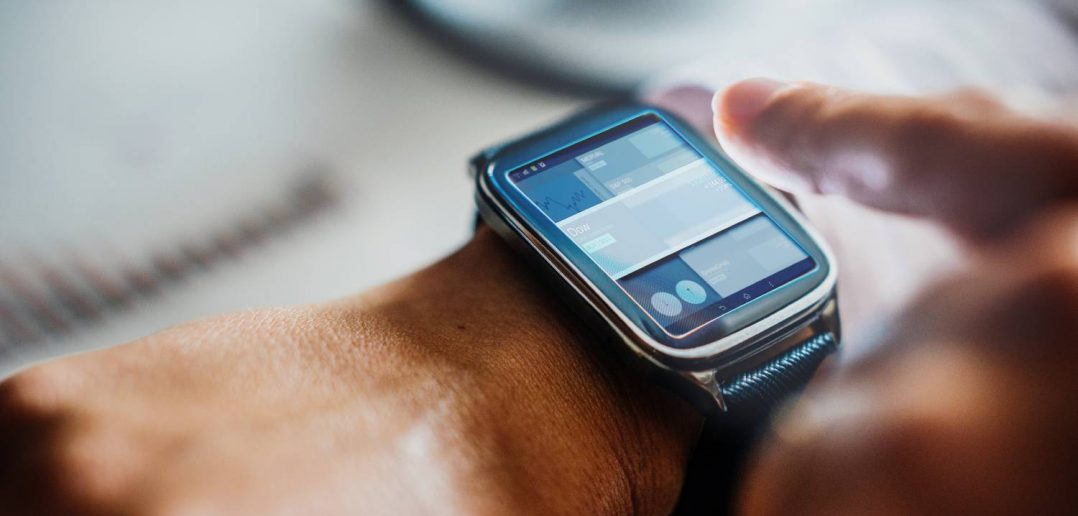The convergence of digitalization, AI and machine learning that has been integrated into wearable devices has become a boon for many industries, particularly health care.
When Fitbit launched its first wearable device in 2009, it clipped on a user’s clothing and utilized an internal motion detector to track the wearer’s movement, sleep and calorie burn throughout the day.
Now, more than a decade later, the look of many of these devices has changed, and so too have the capabilities of the technology itself. Wearable makers have evolved their products into watches and other forms of jewelry that come with applications that can reveal much more than just how many steps someone took on their daily walk. The most common types of wearables are wrist-worn fitness trackers, but new wearables are now being introduced to be worn in different areas of your body.
The COVID-19 pandemic has limited in-person doctor’s visits, due to the dangers of putting vulnerable patients at risk by coming into the office for routine care. To meet their needs, wearable devices have come back into the forefront as a viable complement to support in-person care. Devices enable patient data to be utilized by a physician via their real-time data tracking capabilities. This has the potential to allow home monitoring of chronic conditions.
MORE: How IoT and geolocation help prevent domestic violence with wearables
As a result, wearable technology has created a capability to improve access to health care since the emergence of COVID-19.
Promotes adherence to treatment
A significant barrier to improving patient health outcomes has been poor adherence to treatment plans and prescribed medications. Nonadherence can be a threat to a person’s health and wellbeing and may also be an economic burden as re-admittance can drive up costs.
Research by the National Institute of Health suggests more than 40 percent of patients put themselves at risk by misunderstanding or just ignoring health care advice.
To alleviate that, wearable technology devices exist in part to empower patients to take control of their health by making it easy to track vitals and keep tabs on important habits. Some have proposed devices that would be able to determine whether a patient has taken their medicine for the day, while other wearables may serve as a reminder to complete necessary daily treatments.
In a recent episode of The Health Pulse with Greg Horne, Microsoft Chief Medical Officer David Rhew detailed an example of how digital technologies have been used in this way.
Rhew spoke about a traditionally in-person cardiac rehab program for patients who have had heart attacks. The program required a 6-to-8 week, three times a week, 30 minutes a day commitment. Rhew says less than 50 percent of people, nationwide, complete the program due to having to take time off from work, trouble finding child care and even transportation, among other reasons.
By giving patients a choice to complete the program in person or digitally via an app on a smartwatch, Rhew’s team found that they improved adherence to the program, patient outcomes and demand for the digital version of the program.
“The completion rate for this program jumped up. And so in the facilities that we worked in, we saw a baseline of 40 some percent jump up to 80%. And then here's the really interesting thing, 30-day readmissions dropped from 12% to less than 1%. I mean, pretty impressive in terms of how patient engagement, and making things easier, improve quality of care, and also reduce costs,” Rhew said.
Fills a gap amid possible shortages
According to a study by the Association of American Medical Colleges, there could be a shortage of more than 100,000 primary and specialty-care physicians by 2034. The COVID-19 pandemic has uncovered many disparities, barriers and vulnerabilities in the health care system, creating a need for more health care providers and facilities.
As an alternative, wearable devices can help people manage their health and stay connected to their providers. With telehealth co-existing to make health care more accessible, patients no longer have to miss work or worry about finding someone to take care of their small children when in the past they’d have to drive to the doctor’s office.
MORE: Streaming data and wearables: Allies against rising health care costs
In many cases, physicians can monitor their patients via their wearable devices and offer quick, customized and personalized diagnoses and treatments to specific issues and roadblocks.
Tracking activity levels and other personal health indicators can also help bring unhealthy lifestyle behaviors to light, encourage change and help spot potential health issues. They can also act as a motivator as they enable progress towards a goal to be monitored.

For example, smartwatches can track changes in your blood oxygen saturation, which is closely related to lung health or monitor your quality of sleep which is key to maintaining healthy body functions. Some devices monitor changes in glucose levels or even help those who might struggle with asthma, among other diseases and conditions.
Technical difficulties can also arise with these devices and many battery limitations still exist, despite many improvements over the years.
There may also be factors relating to the cost of the device that are a barrier to patient adoption and there is also a need to ensure clinical staff is reimbursed appropriately when this data is incorporated into a care plan.
As always with a device that utilizes your personal data to make an informed decision comes privacy and security risks in the form of cyberattacks and oversharing of your personal information.
Those who are least likely to adopt the technology into their everyday lives are those who may need it the most.
Despite some reservations, wearables are becoming more conventional and the number of users continues to grow. Overall, wearables can be a great diagnostic and preventive tool for improving overall health and lowering costs.
Want to continue learning? Subscribe to the SAS Insights newsletter for more news and insights from the analytics experts on a wealth of topics!


